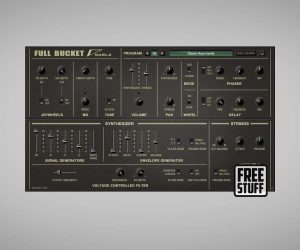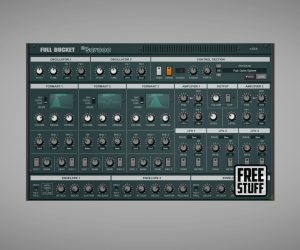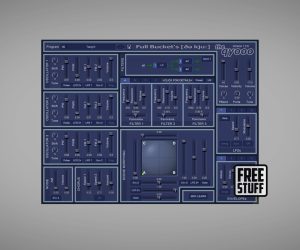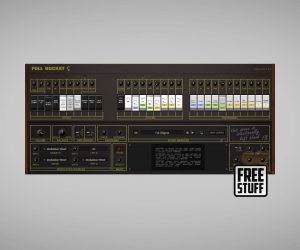
Full Bucket Music: The Blooo
A free synth plugin with oscillators feeding a ring modulator.
German programmer and software engineer Björn Arlt began building VST plugins under the name Full Bucket Effects in 2010. Being a musician, and a synth enthusiast from a young age, he was drawn to analysing and building software synths. He now offers both synth emulations and effects as freeware through his website.
Each voice of the Blooo soft-synth features two oscillators feeding a Ring modulator. The individual outputs of the oscillators, the Ring modulator, and an additional white noise generator are sent to the input mixers of two multi-mode filters; and Filter 2 can receive the output of Filter 1. The filter outputs are routed to two individual amplifiers with panorama control which are connected to the main stereo output bus.
Aside from the audio modules, the Blooo has three envelopes and three LFOs for modulation purposes. The oscillators of the Blooo feature four different waveforms: Sawtooth, Pulse, Sawpulse (a mixture of sawtooth and pulse), and Sine. The shape of the waveforms can be modulated by any unipolar modulation source, or in the case of the pulse waveform this is equivalent to pulse width modulation.
Each of the two filters can be divided into three sections: input mixer, filter stage, and output amplifier. The input mixer accumulates the output signals of Oscillator 1 and 2, the Ring modulator (output of Oscillator 1 multiplied by the output of Oscillator 2), and a white noise generator. Filter 2 can also add the output of Filter 1’s filter stage.
From the input mixer the signal is sent to a four-pole filter stage of selectable mode: Lowpass, Highpass, Bandpass, Allpass and Phaser (Allpass added to the input mixer’s output). The filter stage may also be bypassed (i.e. the input mixer signal is routed directly to the output amplifier) or even turned off completely. The Cutoff parameter adjusts the cutoff or centre frequency of the filter stage.
Like the oscillators, the cutoff/centre frequency can be modulated independently by three modulation sources. Resonance controls the amount of feedback from the output to the input of the filter stage. If Resonance is set to a value near 100 the filter will start to self-oscillate.
The output of the filter stage is sent to an amplifier section with stereo panorama control which can be modulated by a unipolar or bipolar source. The output volume is controlled by the Volume parameter, the output signal of Envelope 1, and two optional unipolar modulation sources. Note that Envelope 1 is hard-wired to the amplifiers of both filters.
The number of voices in standard Poly mode ranges from 1 to 64, and the new Unison mode allows up to 8 slightly detuned voices stacked on top of each other for various polyphonic modes. Clicking on the digital display opens a menu where you can select the desired Unison/Poly mode.
Features:
- Up to 64 voices polyphony including Unison mode and portamento
- Two band-limited oscillators including Ring modulation and Soft/Hard sync
- Four oscillator waveforms (sawtooth, pulse, sawpulse, sine) with shape control
- Additional white noise generator
- Two multi-mode four-pole zero-delay feedback filters (lowpass, highpass, bandpass, allpass, phaser) with resonance and panorama control
- Three envelopes (ADSR) with exponential slopes
- Three low frequency oscillators (LFOs) with tempo synchronisation
- Supports MTS-ESP by ODDSound dynamic micro-tuning
- Resizable user interface (not N version)
- MIDI Learn – all parameters can be controlled by MIDI CC
- Plugin supports Windows and macOS (32 bit and 64 bit)
















RESPONSES